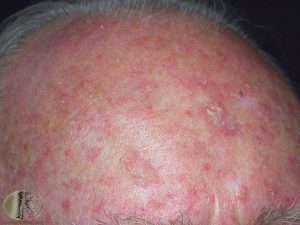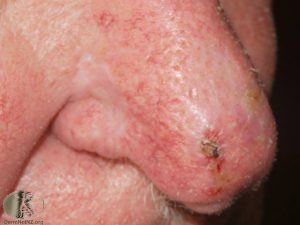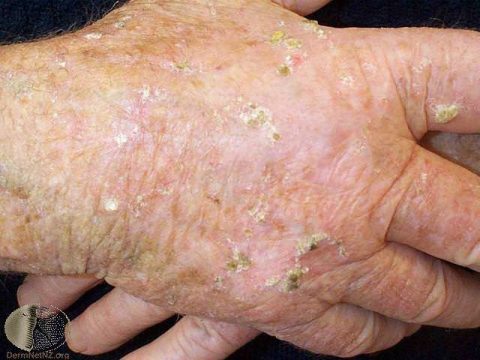
An actinic keratosis (AK) is a dry, scaly patch or spot that is considered a precancerous growth on the skin that may lead to squamous cell carcinoma (SCC) if left untreated. People who get AKs usually have fair skin and tend to develop their first ones after the age of 40 because they arise from years of sun exposure. Areas that have had the most sun exposure over the most time tend to develop AKs, such as the scalp, face, ears, neck, forearms, and back of the hands. AKs may be slightly itchy or painful, but they are often asymptomatic.
Treatment is important to prevent the development of SCC. Various treatment options offered by your dermatologist may include:
- Cryosurgery with liquid nitrogen
- Electrosurgery and curettage if concern for early SCC
- Shave biopsy if there is concern for early SCC
- Topical 5-fluorouracil cream
- Topical imiquimod cream or gel
- Topical ingenol mebutate (Picato)

Treatments can cause redness, pain, and discomfort for different amounts of time during and after treatment depending on each option, but there is usually dramatic improvement or resolution of the precancerous skin changes with these treatments. Even after successful treatment, it is likely that new AKs will form in areas of skin with lifelong sun exposure, even if these areas of skin have already been treated for AKs. Repeat treatment is often necessary.

